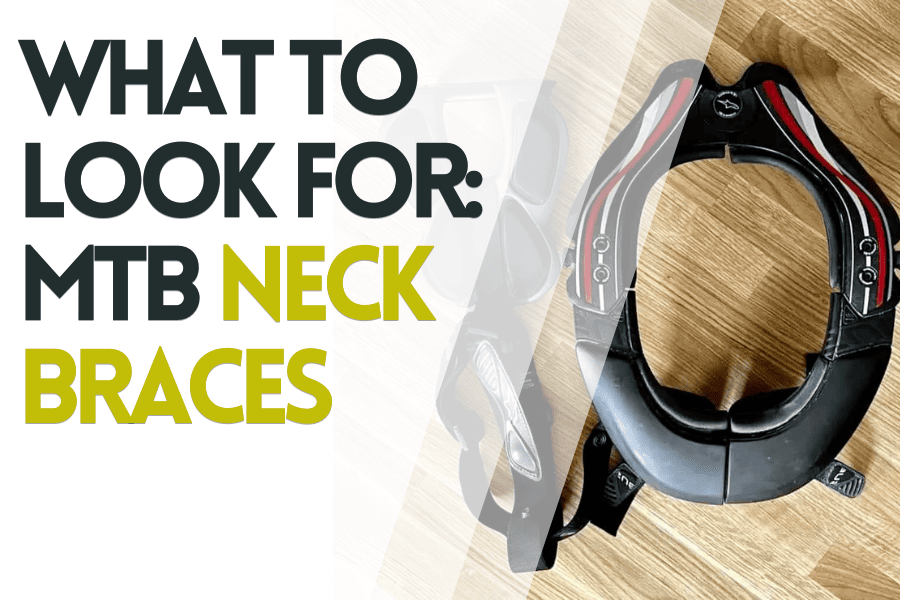In this guide on what to look for in a neck brace for downhill mountain biking, learn the key features and how to ensure safety and comfort while riding.
On a mountain bike, you have a different body position while riding than on a motocross bike – especially the head position. So there are a couple of intricacies I picked up from using an Alpinestars BNS for years.
It’s important to also understand the limitations of neck protection. No brace can protect against all types of neck injuries. They are very good at mitigating neck injuries in certain types of crashes.
Movement is also restricted, and there’s a debate on whether neck braces can increase the likelihood of collarbone injuries.
Read more on the effectiveness of MTB neck braces.
What to look for in an MTB neck brace
There are a few key aspects that make a good, recommendable neck brace. While fitting is subjective, these characteristics are non-negotiable when talking about safety:
- Most Important: Chest and back contact points like wings or back plates, preferably on the scapula.
- Key: Adjustable straps for a tight fit to the upper body and limited movement. (Otherwise, it will bounce around and constantly slip forward and push against the helmet during normal riding.)
- Adjustable size to fine-tune fitment.
- Padded contact points where body and brace meet.
- A long lip at the rear for the helmet to push against.
- Ideally, no contact with the spine in the middle of the back that could lead to energy dissipation there.
- Body armor or back protector compatibility.
- Quick release that is easy to operate.
Leatt, Atlas, and Ortema make neck braces with two separate backplates, that sit on top of the shoulder blades.
It’s important to get a neck brace that fits well. Most manufacturers offer different sizes (similar to clothing sizes like S/M or L/XL) and provide sizing guides on their websites.
Too small and you’ll hit your chin on the front and bite your tongue.
Too large and your head can bend too far until it hits the brace.
A properly sized brace is crucial for both safety and comfort. For MTB you may want to get a larger one and size down with little adjustments. This way you can avoid hitting the back of the helmet all the time (which happens a lot).
Weight is also a consideration for comfort when wearing the brace all day. The lower the weight, the better to wear. But carbon is more expensive.
Avoid soft neck collars
Neckbraces to avoid are the ones not actually called beck braces, but continuously showing up when researching: the neck collars.
They have a very close resemblance to sleeping braces, which are designed for neck support, not impact absorption.
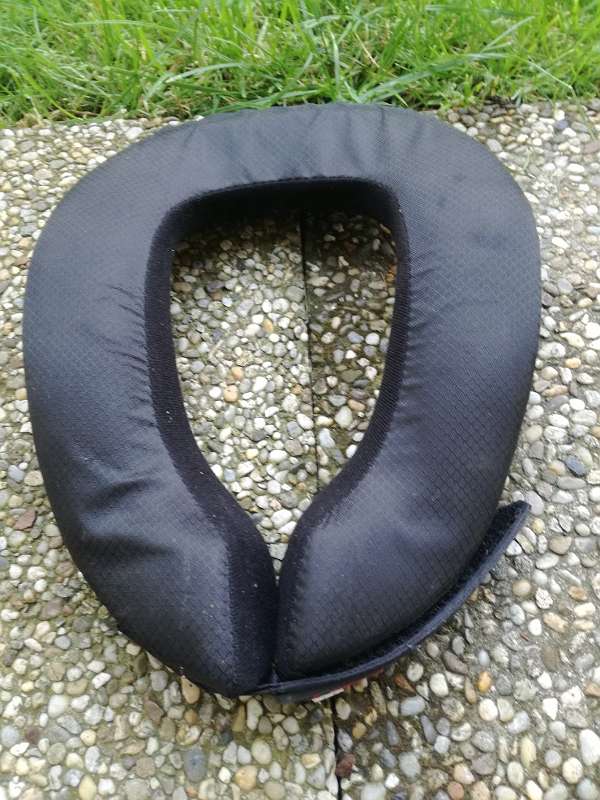
A soft neck collar does not adequately immobilize the cervical spine, while the rigid neck brace does.
Study: A comparison of neck movement in the soft cervical collar and rigid cervical brace in healthy subjects
They just sit around your neck with nothing to push up against on the upper body. So they have none of the characteristics important to an actual MTB neck brace.
Either way, these do not transfer the force away from the neck. In some cases even expose the head or neck to more potential impact by being so soft.
Recommended Neck Braces
If you come to the informed conclusion that you’d like to look into which neck brace in particular to get, there are a couple of reputable brands and models to recommend.
These are from the four main neck brace manufacturers in this market – each with its strengths and weaknesses. There isn’t one neck brace that does every single thing right.
Depending on your needs, some are better for you than others.
Ortema ONB Neck Brace
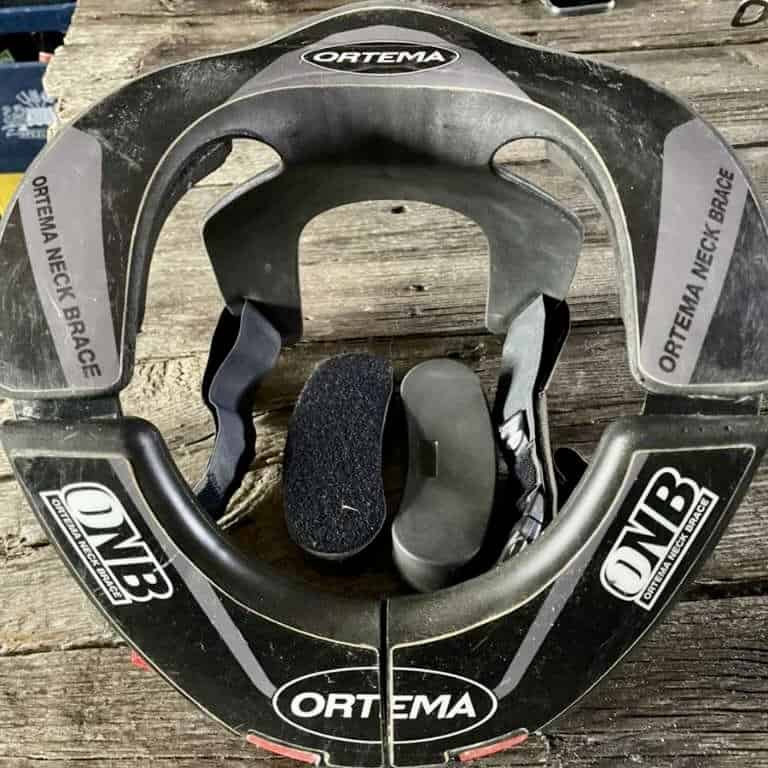
Arguably one of the best-fitting neck braces on the market. The parts are designed to heat up and mold to your body, making initial fitting more time-consuming, but paying off in comfortable and secure wearing.
It’s extremely adjustable with almost all parts hot-swappable or adjustable.
The two backplates are nice and wide to accommodate a back protector. It comes with straps to tie down and keep it from moving on the rough downhills.
If I bought a new neck brace for mountain biking, it would be the Ortema ONB.
Leatt DPX 5.5 Neck Brace
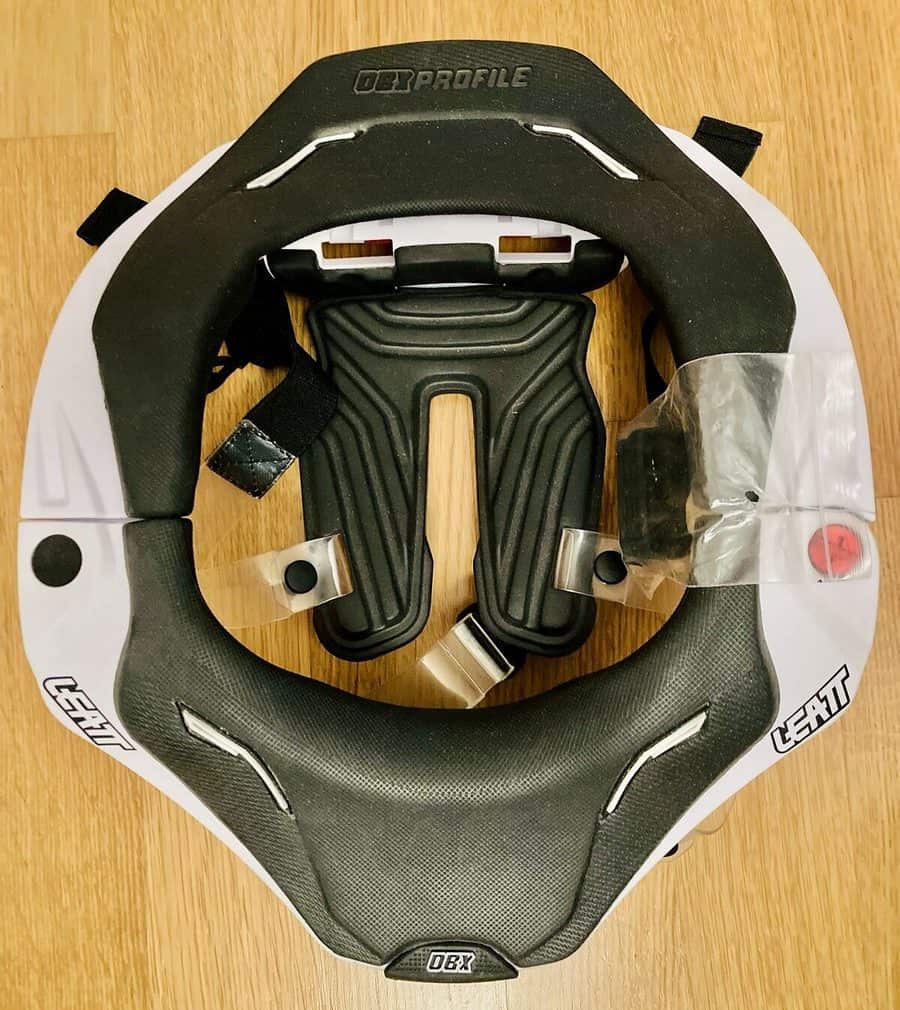
Leatt is probably the most well-known neck brace manufacturer. They are complete specialists in protective riding gear. This one comes with the strap kit included.
The DPX line of neck braces, compared to the GPX, is designed for mountain biking. GPX and DBX are both built on the same frame but with slightly different padding on top of the rear collar and the lateral areas near the neck.
With those differences in mind, they can be used for off-roading and mountain biking alike.
This brace is highly compatible with back protectors and body armor from Leatt. Not so much with other brands tho. The backplate has similar issues as the Alpinestars BNS, as it sits in the middle of the upper back.
A good alternative might be the Leatt STX Neck Brace, which has two rear scapula wings instead of one middle one.
The Leatt GPX braces have a high and large brace surface for the helmet to push against. However, their neck brace frame seems to be geared more towards motocross than mountain biking.
It’s one of the largest to use on mountain bikes. The size is also what offers good protection, although heavy in use.
Atlas Air Brace
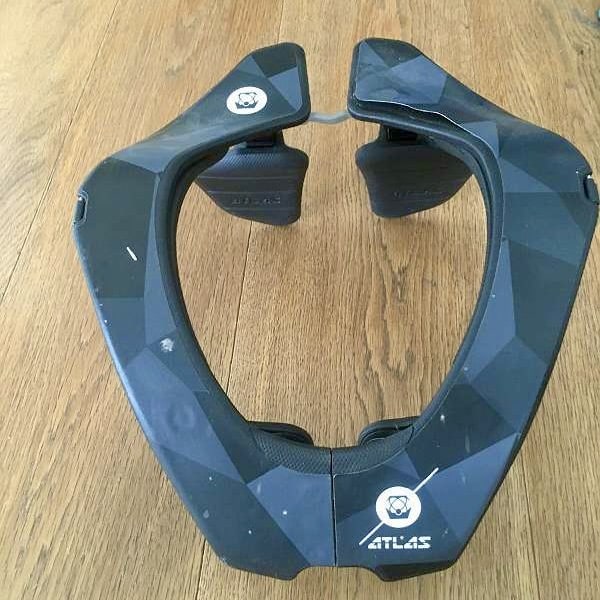
This one is also highly adjustable to fit pretty much any rider with any helmet. The rear wings are not spaced wide enough apart at the shoulder blades to fit a back protector in between.
They’re also on the shorter sides, which allows the brace to slide back more than others.
The Atlas neck brace is one of the lighter models. It’s also more prone to move around a lot if not tied down. Straps are available, but not so easy to use as other models.
The standard loops, similar to what Alpinestars BNS ships with, cut into the armpits and are not fun to use all day. Furthermore, the fit is too loose.
Alpinestars BNS (Bionic Neck Support)
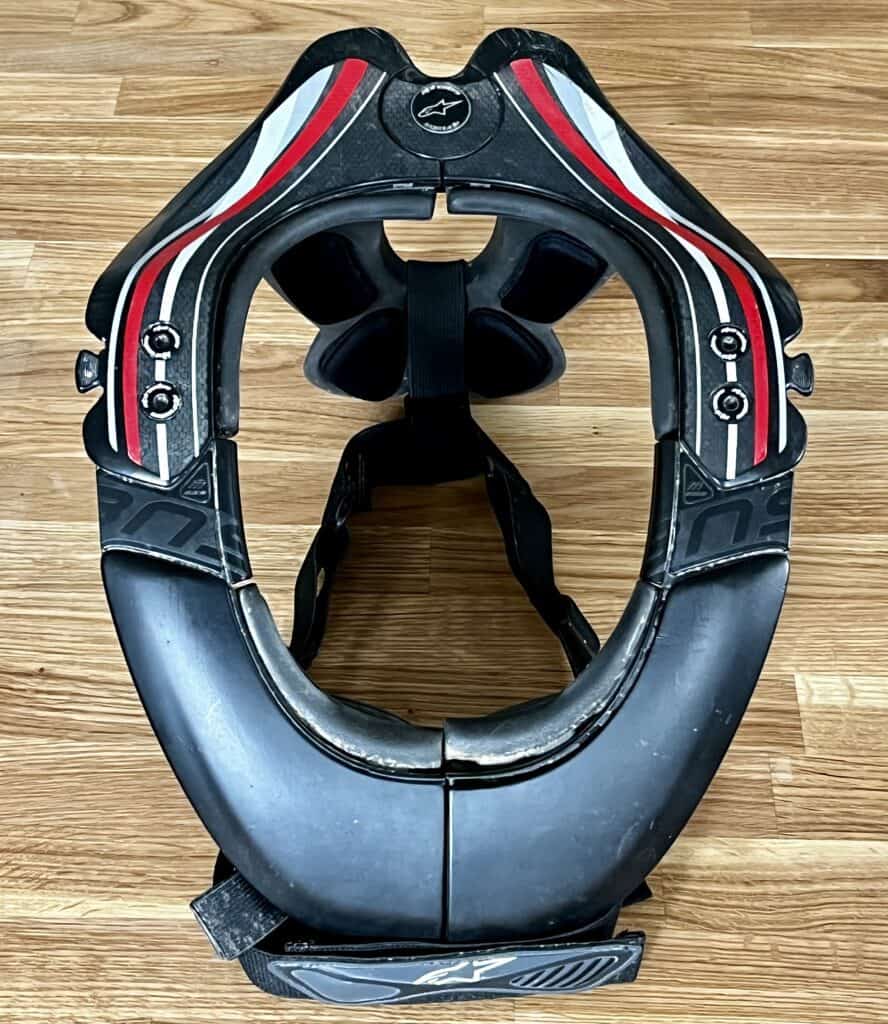
Still one of the better ones on the market. But I would not recommend it over the Ortema due to the backplate over the spine, which also makes it difficult to use with back protectors.
I tried both under and over mine, but couldn’t get it to fit comfortably while also tight.
Even with the straps (sold separately), it tends to move more than what I’d like when used in combination with a back protector. That’s also the reason I don’t wear it anymore and ride without a neck brace.
Good Kids neck braces
All the models mentioned above are also available in youth sizes and often pretty exciting colors:
